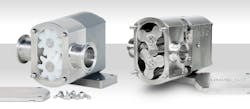The water consumed in oil & gas production is something tremendous. Folks in the water and wastewater treatment industry know it, and they’re introducing solutions that make continuing use of carbon-based energy more sustainable.
“The oil production companies need to have the same capabilities as very large water treatment facilities,” says Gilad Cohen, director & head of the Industrial Water business unit, IDE Technologies Ltd., Kadima, Israel.
The issue of water usage during fractionation at natural gas and oil drilling sites is being increasingly examined in the U.S. Water-related issues in the Canadian oil sands have been current even longer, says Cohen, and “the industry is moving into a more mature stage in its production processes, with growing water reuse. In some cases, for every barrel of oil produced three to five barrels of water must be treated. They want solutions that are reliable, sustainable — with less consumption of chemicals and energy — and economically feasible in terms of capital and operating expenditures.”
Water heritage
The biggest recent feather in IDE Technologies’ cap is that in January it signed contracts to design and supply equipment for the largest seawater desalination plant in the U.S., located near the Encina Power Station in Carlsbad, Calif. The project starts construction this year, will cost near $1 billion and will produce up to 54 million gallons of high quality water a day by 2016.
The plant will be built near a power station in the city of Carlsbad. IDE also has a 30-year operations and maintenance agreement with Poseidon Resources, which has secured $922 million funding for the project. Poseidon Resources, a subsidiary of Poseidon Water, says the treated water will be delivered into San Diego County’s water system. The plant will use IDE’s reverse osmosis technology.
RO desalination plants are used for treating the full range of water compositions, including tap water, brackish water (BWRO) and seawater (SWRO).
In 2005, IDE completed the construction and launch of the world largest SWRO plant in Ashkelon, Israel, with an annual capacity of 118 million cubic meters. Since then, IDE has built another 127 million cubic meter SWRO plant in Hadera, Israel, and is currently building a 150 million cubic meter SWRO plant in Sorek, Israel. Each of the above-mentioned plants was and currently is the largest SWRO desalination plant of its kind in the world.
IDE’s low-temperature thermal-distillation units produce boiler feed water from seawater. They are available in two versions differentiated by the method used for the supply of energy: 1) mechanical vapor compression (MVC), an electrically driven mechanical compressor; and 2) multi effect distillation (MED), a low pressure steam process.
To the oil sands
These same technologies, Cohen says, will play a big role in making oil extraction in the oil sands more sustainable. Oil sands typically are loose or partially consolidated sandstone mixtures of sand, clay and water saturated with petroleum bitumen. Production is by strip mining or the oil is made to flow into wells by reducing its viscosity using steam or other means. Preprocessing includes removal of water, sand and waste, and most typically hydrogenation through catalytic hydrocracking, expending additional large amounts of energy and water.
Beginning in the 1990s, IDE’s produced water evaporators and MVC technology have been in use in heavy oil fields in northern Germany, reusing produced water for steam generation, using CSS (Cyclic Steam Stimulation) for enhanced oil recovery. The method was accomplished using closed water cycle treatment processes.
“We’re taking well-proven water and wastewater treatment technologies and adapting them to the needs of the oil sands and other global energy industries,” concludes Cohen.

